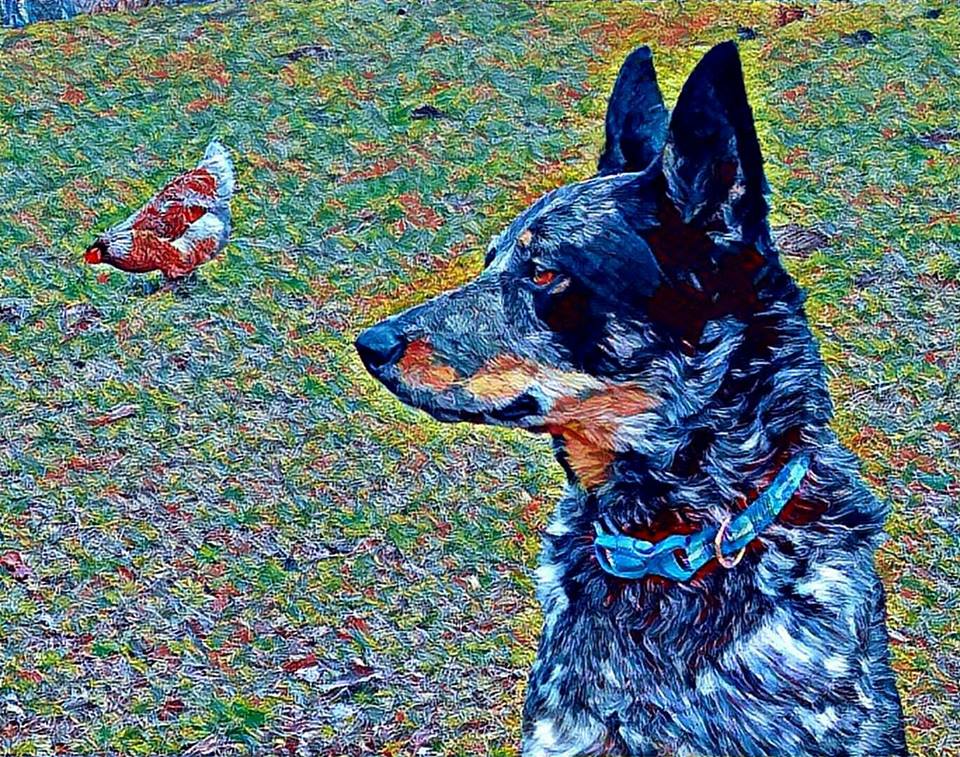For starters, Archie and the cats (another good band name)) rarely go outside anymore. And when they do, it’s strictly “business” and they’re back at the door begging to come back in within a few minutes. Which was cute at first, but now, with all the furry bodies around, we have had to clean the house every couple of days. Otherwise there are furball tumbleweeds blowing across the floor, which is not cute.
The Goats, Tilly and Moose, the Livestock Dog
The pasture crew is doing pretty well, all things considered. Basically, they all just need a place to get out of the wind and snow. We have a half shelter that faces southeast (since most of the nasty weather comes from North and West) and it has several inches of pine shavings as bedding. On the nastiest days, we barely see the goats and Tilly at all.

On our coldest days, they spend most of the day in the shelter keeping each other warm. Our goats are Nigerian Dwarfs and (despite what the name made us think) are very cold tolerant. This goat breed has evolved to be cold tolerant up to -40. Crazy, right?! It was cute to watch their bodies turn into little puff balls as their winter coats came in.

Tilly, our Katahdin sheep, is a hair sheep, so she doesn’t have the typical wooly body most people envision when they think of a sheep. Her breed basically exists for meat production and the need to sheer a sheep is an extra step that some farmers don’t want to take in order to process the meat. So they cut out the wool part all together, which is why we put a coat on her. Plus, she got sunburned this summer so her hair isn’t as thick as it should be. She seems to really enjoy wearing coats too. Which is adorable.

Moose, our Karakachan livestock dog, is the least concerned of anyone on the farm (humans included). He spends most of his day out of the shelter lying in the snow and keeping any eye on our frozen farm. Karakachans are originally from Bulgaria and were bred to be mountain livestock guard dogs so it’s in his genetics to be happy in cold weather. As with the chickens, plenty of fresh water and a bit of extra food has been given to everyone out in the pasture. We have a large stock tank that has a heater to make sure they always have water available. The goats and Tilly have hay in the feeder at all times and they get a mixture of livestock feed and beet pulp in the mornings and evenings.

The humans
What about us??? It takes us quite a while to get bundled up and steel ourselves against the biting cold, but depending on what we’re doing and how windy it is, it hasn’t always been too terrible. Yesterday, with the temp at about -1°F I was actually too bundled up and was sweating by the time I got back inside. Hauling 50lb bags of chicken feed and corn, 5 gallon buckets of water and hay flakes really gets the blood flowing!




